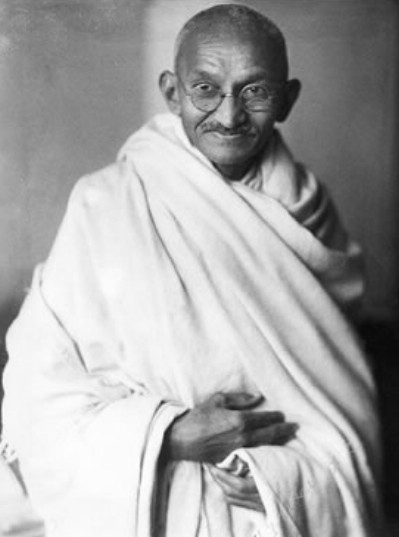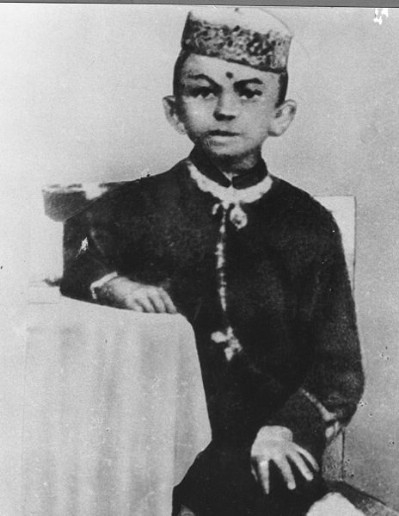 |
| mahatma gandhi (google) |
Mahatma Gandhi was born on 2nd October in a small seaside town named porbunder near Bombay. In those days India was made up of little kingdoms which had some degree of self governance but were supervised and controlled by the British. The town of porbunder was in a kingdom of kathiawad, and Gandhi’s father was employed as prime minister to its ruling prince.
In his childhood, Gandhi was known as “moniya”. As the youngest member of a large joint family, little moniya held a special position which he seemed to have enjoyed. Often when his father was not at home, he would remove the image of the ruling prince and put himself in its place. This same boy was to go on to unseat the mighty British empire from its throne in Delhi.
30 Jan 1948: India was four months into her independence. A crush of people had thronged the streets of New Delhi .Grief was a mournful visitor, a silent sentinel. A pall of unrelenting gloom was preening down over the gathered horde, shrouding them in a blanket of misery. It was Mahatma Gandhi funeral, his final march attended by the citizens of a free nation who owed him their freedom .sixty years on and modern India continues to pay her debts to the father of the nation.
Since all human beings partook of the divine essence, they were "ultimately one". They were not merely equal but "identical". As such, love was the only proper form of relation between them; it was "the law of our being", of "our species". Positively, love implied care and concern for others and total dedication to the cause of "wiping away every tear from every eye." Negatively it implied ahimsa or ‘non violence’. Gandhi’s entire social and political thought, including his theory of Satyagraha, was an attempt to work out the implications of the principle of love in all areas of life.Gandhi himself felt that he was most influenced by his mother whose life was an "endless chain of fasts and vows" as a devout adherent of Jainism, a religion in which ideas of nonviolence and vegetarianism are paramount.Married by arrangement at 13, Gandhi went to London to study law when he was 18. He was admitted to the bar in 1891 and for a while practiced law in Bombay. From 1893 to 1914 he worked for an Indian firm in South Africa. During these years Gandhi's humiliating experiences of overt racial discrimination propelled him into agitation on behalf of the Indian community of South Africa. He assumed leadership of protest campaigns and gradually developed his techniques and tenets of nonviolent resistance known as Satyagraha (literally, "steadfastness in truth").Returning to India in January 1915, Gandhi soon became involved in labor organizing. The Jallianwala Bagh massacre of Amritsar (1919), in which troops fired on and killed hundreds of nationalist demonstrators, turned him to direct political protest. Within a year he was the dominant figure in the Indian National Congress, which he launched on a policy of noncooperation with the British in 1920-22. Although total noncooperation was abandoned, Gandhi continued civil disobedience, organizing protest marches against unpopular British measures, such as the salt tax (1930), and boycotts of British goods. Gandhi was repeatedly imprisoned by the British and resorted to hunger strikes as part of his civil disobedience. His final imprisonment came in 1942-44, after he had demanded total withdrawal of the British (the "Quit India" movement) during World War II.
 |
| young gandhi (google) |
Gandhi also fought to improve the status of the lowest classes of society, the ‘Untouchables’, whom he called harijans ("children of God"). He believed in manual labor and simple living; he spun thread and wove cloth for his own garments and insisted that his followers do so, too. He disagreed with those who wanted India to industrialize. Gandhi was also tireless in trying to forge closer bonds between the Hindu majority and the numerous minorities of India, particularly the Muslims. His greatest failure, in fact, was his inability to dissuade Indian Muslims, led by Muhammad Ali Jinnah, from creating a separate state, Pakistan. When India gained independence in 1947, after negotiations in which he was a principal participant, Gandhi opposed the partition of the subcontinent with such intensity that he launched a mass movement against it. Ironically, he was assassinated in Delhi on January 30, 1948, by a Hindu fanatic who mistakenly thought Gandhi's anti-partition sentiment were both pro-Muslim and pro-Pakistan. Gandhi’s intellectual influence on Indians has been considerable. Some were attracted by his emphasis on political and economic decentralisation, others by his insistence on individual freedom, moral integrity, unity of means and ends, and social service; still others by his satyagraha and political activism. For some students of India, Gandhi’s influence is responsible for its failure to throw up any genuinely radical political movement. For others, it cultivated a spirit of non-violence, encouraged the habits of collective self-help, and helped lay the foundations of a stable, morally committed and democratic government. Gandhi’s ideas have also had a profound influence outside India, where they inspired non-violent activism and movements in favour of small-scale, self-sufficient communities living closer to nature and with greater sensitivity to their environment. Prominent among these are Martin Luther King in the United States and, more recently Nelson Mandela in South Africa. There comes a time in the evolution of mankind when history encounters an individual whose actions and deeds have such a profound impact that they resonate through the years, inspiring generations of people. Mohandas karamchand gandhi was one such man whose influence extends in all spheres of life , from political to social.The Indian flag the charkhra or the spinning wheel that Gandhian had devised to make Indians self-sufficient and build a new economic and social order,was used on the first national ( also called swaraj flag ) created bythe national congress in 1921.
Page created on 6/29/2011 12:00:00 AM
Last edited 6/29/2011 12:00:00 AM
